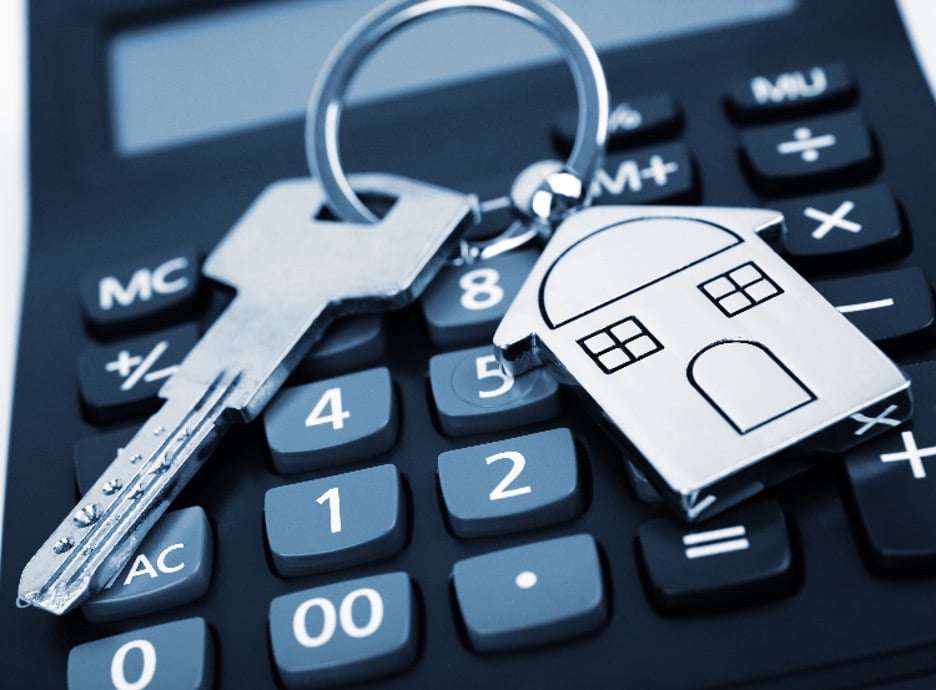NOI is a key financial metric that real estate investors use when analyzing rental property. In this article, we’ll discuss some of the ways to help accurately calculate NOI, and look at real estate calculations that use NOI.
Key Takeaways
- NOI calculates the current and future potential profitability of a rental property.
- Different elements used to calculate NOI include potential rental income, vacancy loss, and operating expenses.
- NOI is a real estate metric that is difficult to manipulate because the calculation does not include debt service or mortgage interest payments.
- NOI is also used in other real estate calculations including cap rate and debt service coverage ratio.
What is NOI in Real Estate?
Net operating income (NOI) in real estate calculates the potential profitability of a rental property by comparing the property’s annual income after operating expenses to the market value or price of the property.
NOI in real estate is used to help predict how profitable a property might be, based solely on the income the investment generates. For that reason, net operating income does not include deductions for debt service or mortgage interest payments, capital expenses, or income taxes paid by the investor.
Because NOI does not include variable factors such as debt service, net operating income is less subject to manipulation based on the amount of leverage used compared to other real estate financial metrics such as cash-on-cash return.
By looking at a property’s current and projected NOI, a real estate investor can gain a better understanding of the potential annual cash flow of an investment compared to the cost of operating the investment.

NOI Formula
The basic formula for calculating NOI is as follows:
- NOI = Gross Operating Income – Operating Expenses
So, if a real estate investment has a gross operating income of $18,000 per year and operating expenses of $9,500, the NOI is $8,500.
However, many real estate investors reformulate the NOI calculation to factor in items such as other income sources (including pet rent, late fees, or appliance rent) and potential rental income lost due to vacancy.
By including other income and expense items, the NOI formula can be redefined like this:
- NOI = (Potential Rental Income + Other Income – Vacancy Loss) – Operating Expenses
These are the different elements used to more accurately calculate NOI:
Potential Rental Income
The total amount of income a property would generate if it was occupied 100% of the time and leased at a fair market rent compared to comparable properties.
Vacancy Loss
Amount of potential rental income lost due to vacancy caused by tenant turnover or a tenant being evicted due to non-payment of rent. Some real estate investors use a pro forma vacancy rate equal to 5% of the potential rental income.
Effective Rental Income
The amount of rental income a landlord can reasonably expect to collect is calculated by subtracting vacancy loss from the potential rental income.
Other Rental Income
Income that is not part of the regular monthly or base rent, such as additional pet rent, roommate rent, appliance rent, laundry for apartment buildings, or late fees.
Gross Operating Income
Total of effective rental income plus other rental income.
Operating Expenses
Costs directly related to operating the property to collect the fair market rent and maintain the property value. Normal operating expenses include property management fees, property taxes, insurance, and maintenance and repair expenses.
Net Operating Income
NOI is calculated by subtracting the property operating expenses from the gross operating income.
Remember that NOI does not take into account operating expenses and costs that may vary from one investor to the next. Items such as income tax paid by an individual investor, debt service and mortgage interest, capital expenses, and depreciation are excluded from the NOI calculation.
The reason variable expenses like these are not included in NOI is to provide the investor with a clear idea of the amount of income a property could generate compared to the cost of operating the property.

How to Calculate NOI
Now let’s look at how to calculate the NOI of a single-family rental home using the above elements:
Potential Rental Income = $12,300
Vacancy Loss = <$615> (based on 5% of the potential rental income)
Effective Rental Income = $11,685
Other Rental Income = $240 (pet rent)
Gross Operating Income = $11,925
Operating Expenses = <$3,245>
Property Taxes = <$2,100>
Total Expenses = <$5,345>
Net Operating Income = $6,580
Operating Expenses vs. Other Expenses
Operating expenses in real estate are the costs directly related to operating the property to collect the fair market rent and to maintain the property in its current condition. They do not include costs to finance the purchase of the property or capital improvement costs that add value to the property.
Operating Expenses
Some of the main costs included in operating expenses include marketing and tenant screening costs, leasing and property management fees, repair and maintenance, property taxes and insurance, and utilities if paid for by the landlord.
Seasonal expenses such as snow removal, semi-annual servicing of the heating and cooling systems, and landscaping are also treated as normal operating expenses.
Because operating expenses (and sometimes gross operating income) can vary from one month to the next, NOI is normally calculated on an annual basis instead of month to month.
Other Expenses
Debt service, mortgage interest payments, and capital expenditures made to upgrade a property and add value (such as replacing carpeting or installing a new roof) are other expenses that are not included when calculating NOI.
By excluding other expenses that vary from one investor to the next, NOI can provide an investor with a clear idea of the property’s current or future potential cash flow. NOI is also a good financial metric to use when comparing alternative investment options to one another, in large part because NOI is extremely difficult to manipulate compared to other financial calculations such as cash on cash return.
Many investors who use financing to purchase a property begin by calculating the NOI to understand the income the property generates without the use of leverage. Then, they calculate the property cash flow and cash on cash return by including all expenses - including debt service and mortgage interest payments – using different down payment and interest rate scenarios.

How Real Estate Investors Use NOI
NOI is used by real estate investors and lenders to calculate the capitalization rate, property value, and debt service coverage ratio:
Capitalization Rate
The capitalization rate (also known simply as cap rate) is a financial metric that measures the current and future potential rate of return on an investment. The higher the cap rate is, the larger the potential return on an investment is.
Cap rate is calculated by dividing NOI by the property value:
- Cap Rate = NOI / Property Value
If the market value of a single-family rental home is $120,000 and the NOI is $6,580, the cap rate is 5.5%:
- $6,580 NOI / $120,000 Property Value = 0.0548 or 5.48%
Property Value
The same cap rate formula can also be used to estimate what the value of a property should be based on the NOI and the cap rate:
- Property Value = NOI / Cap Rate
- $6,580 NOI / 0.0548 Cap Rate = $120,073 Property Value
Potential NOI
You can also use the cap rate formula to calculate the potential NOI of a home by using the cap rate for similar rental properties in the same market:
- NOI = Property Value x Cap Rate
- $120,000 Property Value x 0.0548 Cap Rate = $6,576 NOI
This simple spreadsheet by Roofstock provides an easy way to view the potential financial performance of a given property. You can use it to forecast the potential return of a property. Simply enter some information to view projected key return on investment (ROI) metrics, including NOI, cash flow, cash-on-cash return, and cap rate.
Debt Service Coverage Ratio
Debt service coverage ratio (DSCR) is a calculation real estate investors and lenders use to determine if there is sufficient income to pay the mortgage. The larger the DSCR ratio is, the larger the safety margin is in the event that expenses are higher or income is lower than expected:
- DSCR = NOI / Annual Debt Service
If a single-family rental property has an NOI of $6,580 and the annual debt service (i.e. the total amount of principal and interest payments made over a 12 month period) is $4,590, the DSCR is 1.43:
- $6,580 NOI / $4,590 Annual Debt Service = 1.43 DSCR
Pros and Cons of Using NOI
Calculating NOI in real estate is a good financial metric to use when analyzing a rental property investment, but there are some drawbacks to consider as well:
Pros:
- Using NOI in real estate offers a clearer picture of what an investor may expect from future revenues generated by the property.
- NOI is used by real estate investors and lenders to help determine how risky an investment is by comparing the annual NOI to the annual debt service.
Cons:
- NOI can vary significantly from actual performance based on the thoroughness of tenant screening and how well the property is managed.
- If NOI is miscalculated by using inaccurate rent estimates, vacancy loss, or operating expenses, other financial calculations such as cap rate and DSCR will be impacted as well.









